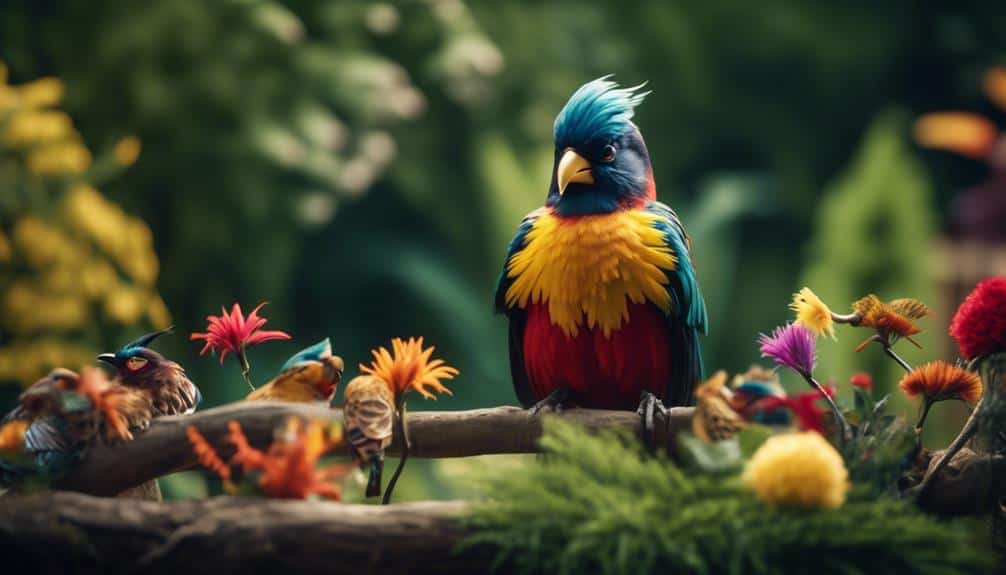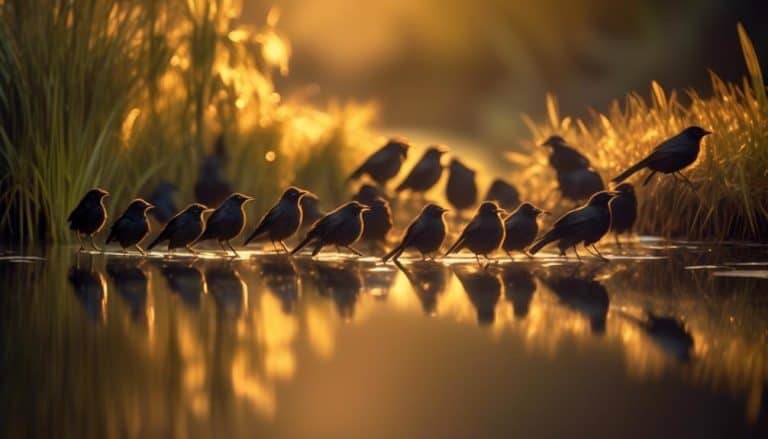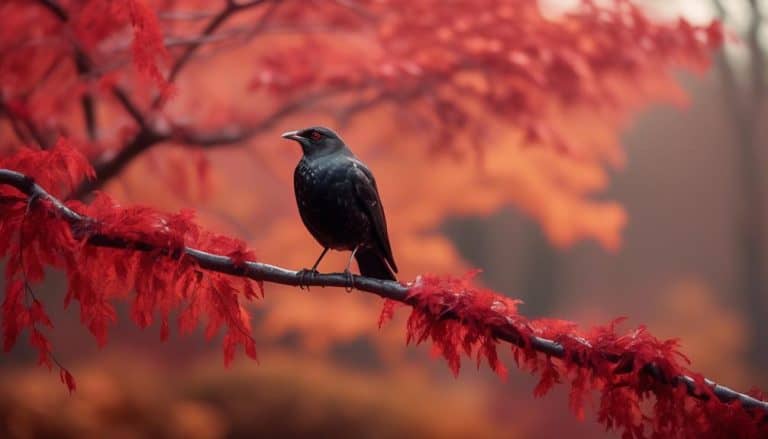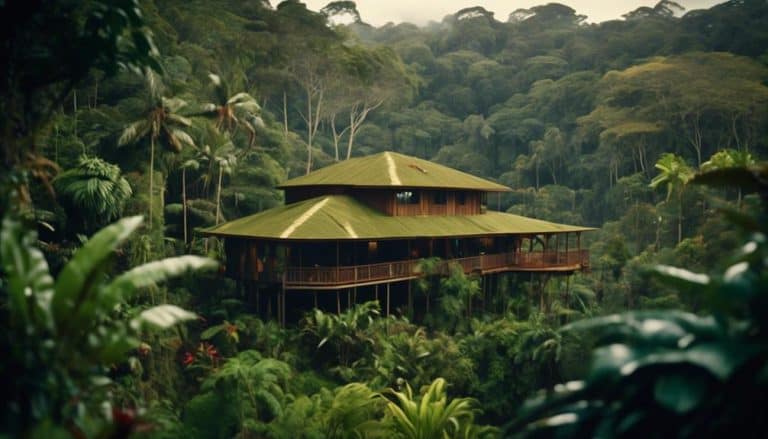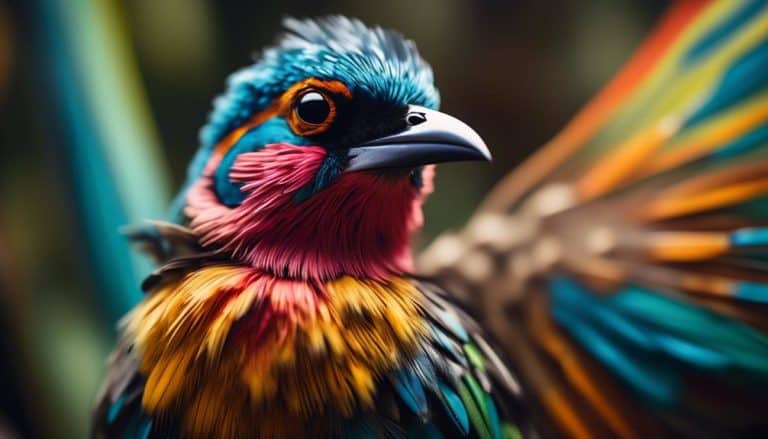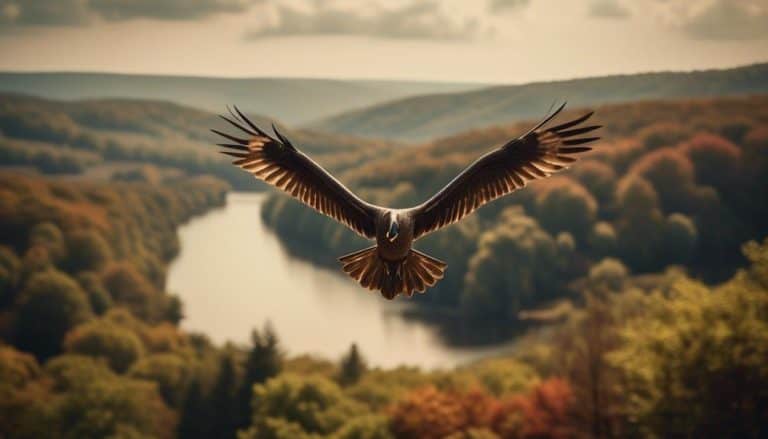I was sitting on my porch one sunny morning, sipping a cup of coffee and enjoying the peacefulness of the neighborhood. Suddenly, a flash of vibrant blue caught my eye, and I couldn't help but wonder, what kind of bird was that?
As I began to research and learn more about the identification of backyard birds in Michigan, I was amazed by the variety and beauty that exists right in our own backyards.
In this discussion, I will share some fascinating insights and tips on how to identify the diverse avian species that call Michigan home. So, if you've ever wondered about the feathered friends flitting around your yard, join me on this journey of discovery.
Common Backyard Birds in Michigan
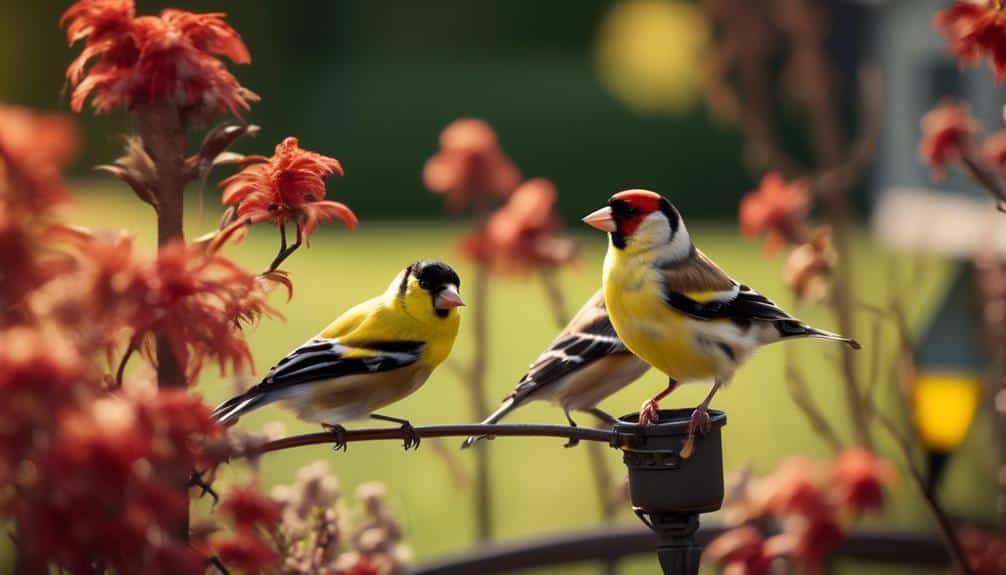
In my backyard in Michigan, I often observe a variety of common bird species fluttering and chirping amongst the trees and shrubs. Attracting birds to your backyard and creating bird-friendly habitats isn't only a delightful way to enjoy nature, but it also plays a crucial role in conserving these avian species.
One of the most common birds found in Michigan backyards is the American Robin (Turdus migratorius). These medium-sized birds have a distinct orange breast and a melodious song that fills the air. They're attracted to yards with fruit-bearing trees and shrubs such as serviceberries and dogwoods. Providing a shallow birdbath and a source of clean water is also essential to attract these birds.
Another familiar backyard visitor is the Black-capped Chickadee (Poecile atricapillus). These small, energetic birds have a black cap and bib, with white cheeks. They're known for their cheerful 'chick-a-dee-dee-dee' call. To attract chickadees, it's important to have a variety of bird feeders with different seed types, including sunflower seeds and suet. They also appreciate nesting boxes and thick vegetation for cover.
Creating a bird-friendly habitat involves offering a diverse range of food sources, water, shelter, and nesting sites. Planting a variety of native plants that provide berries, seeds, and nectar will attract a wide array of bird species. Additionally, incorporating birdhouses, brush piles, and dense shrubs will provide shelter and nesting opportunities.
Identifying Michigan's Songbirds
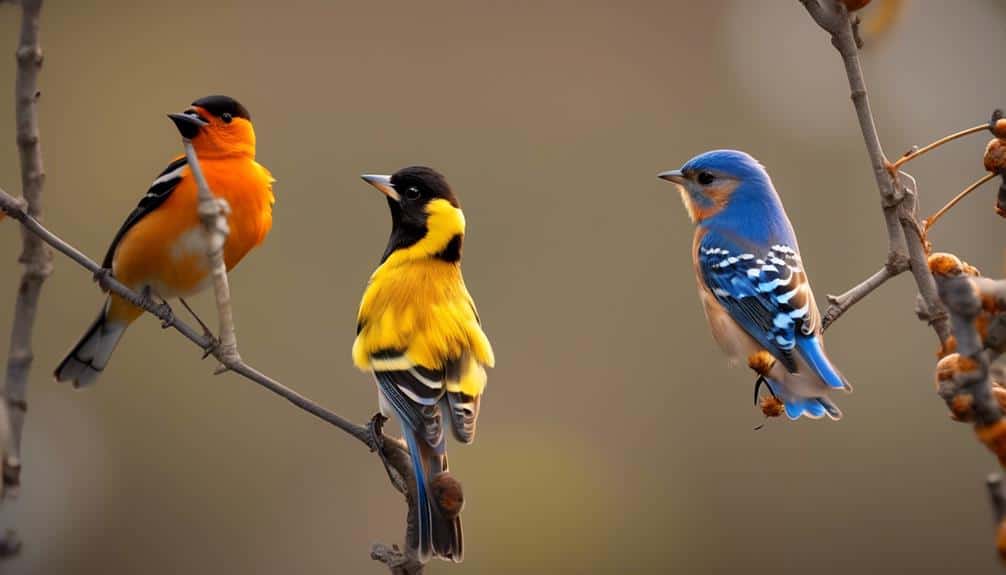
To accurately identify Michigan's songbirds, one must carefully observe their distinct physical characteristics and listen to their unique vocalizations. Songbirds are known for their melodious calls and vibrant plumage, making them a delight to spot and identify in the wild.
Here are some key factors to consider when identifying Michigan's songbirds:
- Bird watching hotspots in Michigan: The state of Michigan offers a plethora of excellent bird watching locations. From the iconic Sleeping Bear Dunes National Lakeshore to the renowned Magee Marsh Wildlife Area, these hotspots attract a wide variety of songbirds during their migration seasons.
- Migration patterns of Michigan's songbirds: Michigan serves as an important stopover for many songbirds during their long migratory journeys. In the spring, a variety of warblers, such as the Yellow Warbler and Black-throated Green Warbler, pass through the state on their way to their breeding grounds. In the fall, species like the White-throated Sparrow and Dark-eyed Junco can be observed as they migrate south.
Michigan's Colorful Woodpecker Species
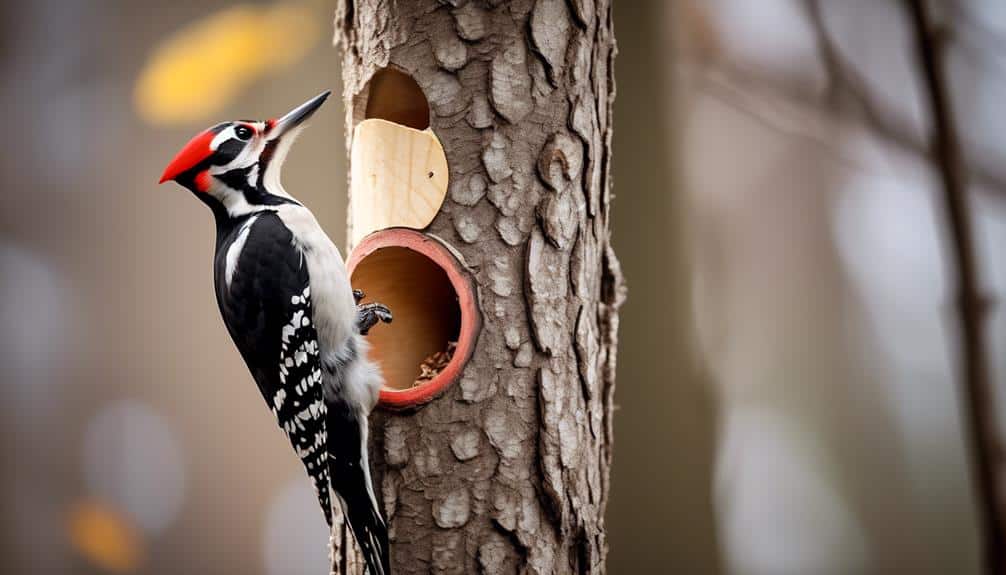
The vibrant state of Michigan is home to a diverse array of colorful woodpecker species. These fascinating birds are known for their unique behaviors and feeding habits. Michigan's woodpeckers play an important role in the ecosystem by controlling insect populations and creating nesting cavities in trees. Conservation efforts are underway to protect and preserve these remarkable species.
Woodpeckers are primarily insectivorous, using their strong beaks to drill into tree bark and extract insects. They also feed on sap, berries, and nuts, depending on the species. Some woodpeckers, such as the Pileated Woodpecker, have a distinctive drumming behavior, using rapid pecking to communicate and establish territory. Others, like the Downy Woodpecker, have a softer tapping sound.
Conservation efforts for Michigan's woodpecker species focus on preserving their natural habitats and ensuring the availability of suitable trees for nesting and foraging. This includes protecting old-growth forests and creating wildlife corridors to connect fragmented habitats. Additionally, efforts are being made to educate the public about the importance of maintaining healthy woodpecker populations and reducing the use of pesticides that can harm these birds and their food sources.
Michigan's colorful woodpecker species are a testament to the state's rich biodiversity. By understanding their behavior and supporting conservation efforts, we can ensure the survival of these magnificent birds for generations to come.
| Woodpecker Species | Appearance | Habitat |
|---|---|---|
| Pileated Woodpecker | Large, black with white stripes, red crest | Mature forests |
| Downy Woodpecker | Small, black with white patches, red spot on head | Woodlands, suburban areas |
| Red-bellied Woodpecker | Medium-sized, black with red cap and red belly | Woodlands, urban areas |
Raptors: Birds of Prey in Michigan
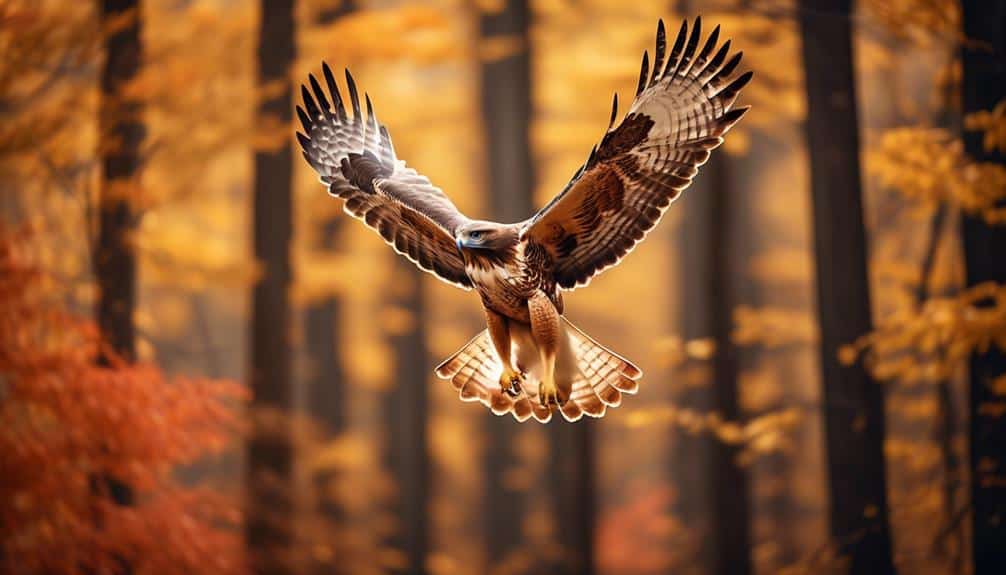
Michigan is home to a diverse population of raptors, majestic birds of prey that play a crucial role in the state's ecosystem. These powerful hunters are characterized by their sharp talons, hooked beaks, and exceptional eyesight. Raptors are at the top of the food chain and help control populations of small mammals and birds, thus maintaining the balance of the ecosystem.
Conservation efforts for raptors in Michigan are essential to ensure their survival. The Peregrine Falcon, once on the brink of extinction, has made a remarkable recovery thanks to reintroduction programs and habitat restoration. The Bald Eagle, our national symbol, has also benefited from conservation efforts and is now a common sight in Michigan.
Migration patterns of raptors in Michigan are fascinating. Many raptors, such as the Red-tailed Hawk and the Turkey Vulture, migrate south during the winter months to escape the harsh conditions. They rely on thermals, updrafts of warm air, to soar effortlessly across long distances. In the spring, they return to Michigan to breed and raise their young.
Understanding the importance of raptors and their conservation is crucial for the overall health of Michigan's ecosystem. By protecting their habitats and promoting sustainable practices, we can ensure that these magnificent birds continue to grace our skies for generations to come.
Unique Water Birds of Michigan
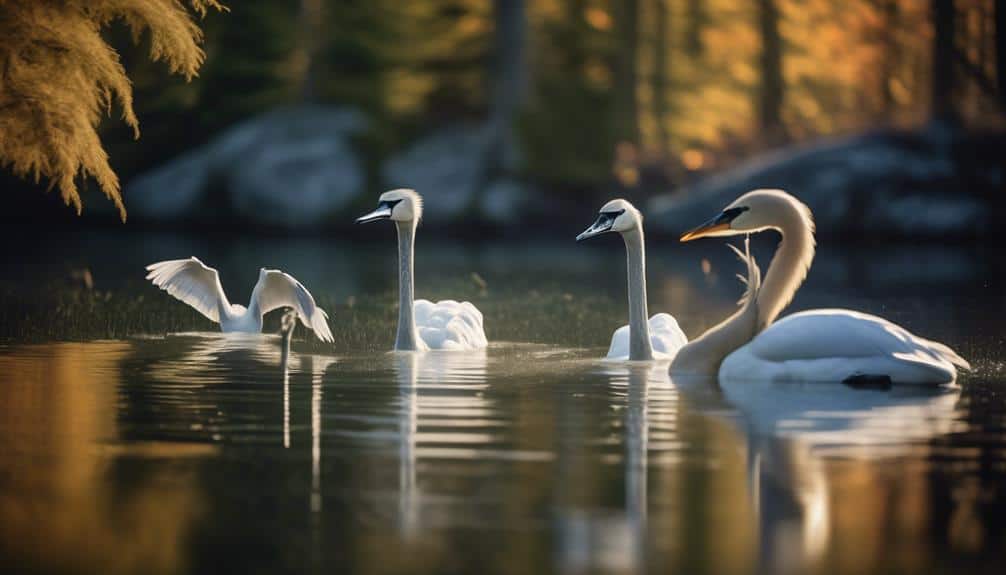
One can find a variety of unique water birds in the state of Michigan. Michigan's location makes it a prime spot for migratory shorebirds, which can be seen along the shores of the Great Lakes. These birds travel long distances, often stopping in Michigan to rest and refuel during their journeys.
Differentiating Michigan's waterfowl species can be a fascinating challenge for bird enthusiasts. To help with identification, here is a table outlining some of the distinct characteristics of common water birds found in Michigan:
| Species | Size (inches) | Coloration | Habitat |
|---|---|---|---|
| Mallard | 22 | Males: Green head, gray body | Wetlands, ponds, lakes |
| Canada Goose | 30-43 | Brown body, black neck and head | Rivers, lakes, farmland |
| Great Blue Heron | 46-52 | Gray-blue body, long neck and legs | Marshes, swamps, rivers |
| Common Loon | 28-36 | Black and white plumage | Lakes, large bodies of water |
These are just a few examples of the diverse water birds that can be found in Michigan. By observing their unique characteristics and understanding their habitats, birdwatchers can better appreciate the beauty and importance of these avian species in Michigan's ecosystem.
Frequently Asked Questions
What Is the Average Lifespan of Backyard Birds in Michigan?
The average lifespan of backyard birds in Michigan varies depending on the species. Some birds, like the American Robin, can live up to 13 years, while others, like the House Sparrow, have an average lifespan of only 2-3 years.
How Do I Attract More Songbirds to My Backyard in Michigan?
To attract more songbirds to my backyard in Michigan, I set up multiple bird feeders filled with a variety of seeds and suet. I also provide fresh water and create a bird-friendly habitat with trees, shrubs, and nesting boxes.
Do Woodpeckers in Michigan Have Any Predators?
Woodpeckers in Michigan, like all woodpeckers, have predators such as hawks, owls, and snakes. They have adaptations like strong beaks and stiff tail feathers for climbing and feeding on insects found in tree bark.
Are There Any Endangered Raptor Species in Michigan?
Yes, there are endangered raptor species in Michigan. Conservation efforts for raptors in Michigan focus on protecting their habitats, reducing threats like habitat loss and pollution, and promoting public awareness and education.
Can Water Birds in Michigan Be Found in Any Other Regions of the United States?
Water bird migration patterns vary, but many species found in Michigan can also be found in other regions of the United States. Similar water bird species, such as ducks and herons, can be observed in various states.
Conclusion
In conclusion, the diverse array of backyard birds in Michigan offers a fascinating opportunity for bird enthusiasts to observe and identify different species.
From the melodious songbirds to the vibrant woodpeckers, Michigan's avian population never fails to amaze.
The majestic raptors and unique water birds add an element of excitement to the state's birdwatching experience.
By learning about the distinct characteristics and behaviors of these birds, we can appreciate the beauty and complexity of Michigan's natural world.
So grab your binoculars and embark on an adventure to discover the remarkable birds of Michigan.

